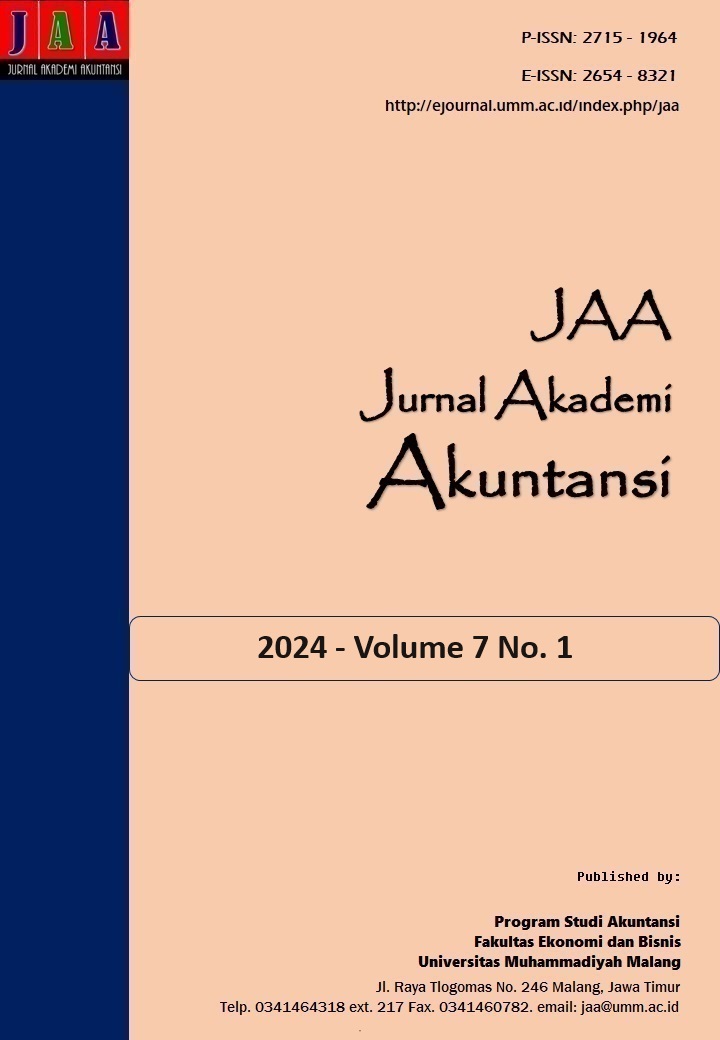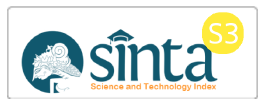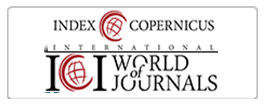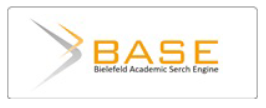Model Utaut Pada Perilaku Penggunaan Aplikasi Praktik Akuntansi
DOI:
https://doi.org/10.22219/jaa.v7i1.30730Keywords:
Accounting Practice Application, Learning Value, UTAUTAbstract
Purpose: This research aims to determine the influence of UTAUT theory factors on the intentions and behavior of Accounting Practice Application users.
Methodology/approach: This research uses a quantitative approach. The research data includes all accounting study program students who use the Accounting Practice Application at Muhammadiyah University Purwokerto, Wijaya Kusuma University, and Jenderal Soedirman University.
Findings: The results of the significance test of performance expectations, effort expectations, social influence, facilitating conditions, and learning value have a positive effect on behavioral intentions. Behavioral intentions have a positive effect on user behavior.
Practical and Theoretical Contribution/Originality: These findings contribute to researchers paying more attention to factors influencing user intentions and behavior.
Research Limitation: There is data that does not meet the criteria. This causes the research results to not be able to describe the population as a whole. To overcome this obstacle, future researchers can increase the population size so that the data obtained is more representative.
Downloads
References
Ain, N. U., Kaur, K., & Waheed, M. (2016). The influence of learning value on learning management system use: An extension of UTAUT2. Information Development, 32(5), 1306–1321. https://doi.org/10.1177/0266666915597546
Al Kautsar, H. F., & Ilham, R. (2022). Analisis Niat Perilaku Dalam Menggunakan Software Akuntansi Pada Mahasiswa Akuntansi Universitas Hayam Wuruk Perbanas Di Surabaya. Jurnal Akuntansi AKUNESA, 10(3), 84–100. https://doi.org/10.26740/akunesa.v10n3.p84-100
Apriliani, A. S., Maesaroh, T., Tunisa Karbaila, F. Z., Hanan, S., & Santoso, S. B. (2022). Strategi Informasi Pada Kegiatan Perbankan Syariah. Jurnal Manajemen Teknologi Dan Sistem Informasi (JMS), 2(1), 63–68. https://doi.org/10.33998/jms.2022.2.1.24
Azizah, Endratno, H. (2022). Analysis of Digital Legal Acceptance based on the Technology Acceptance Model 3 (TAM3). 22(3), 212–220. https://doi.org/DOI: 10.30595/kosmikhukum.v22i3.15647
Azizah, S. N. (2017). Analysis of Factors Affecting the Implementation of Computer-Based Accounting Information System on Small and Medium Enterprises. Jurnal Ekonomi & Studi Pembangunan, 18(2), 111–115. https://doi.org/10.18196/jesp.18.2.4021
Azizah, S. N. (2018). Analysis of Factors Affecting Application of Computer-Based Accounting Information System on Banking Sector. 231(Amca), 382–385. https://doi.org/10.2991/amca-18.2018.105
Chairia, C., Sukmadilaga, C., & Yuliafitri, I. (2020). Peran Ekspektasi Kinerja, Ekspektasi Usaha, Pengaruh Sosial, dan Kondisi yang Mendukung terhadap Perilaku Pengguna Itqan Mobile yang Dimediasi oleh Niat Perilaku Menggunakannya. Jurnal Maksipreneur: Manajemen, Koperasi, Dan Entrepreneurship, 10(1), 48. https://doi.org/10.30588/jmp.v10i1.655
Chandra, F. S., & Novita, D. (2020). Analisis Penerimaan Masyarakat Terhadap Layanan Transportasi Online Menggunakan UTAUT (Unified Theory of Acceptance and Use of Technology). Jurnal Teknologi Sistem Informasi, 1(1), 23–33. https://doi.org/10.35957/jtsi.v1i1.319
Damayanthi, K. S. R. D., & Ariyanto, D. (2022). Evaluasi Keberhasilan dan Penerimaan Sistem Akuntansi Instansi Berbasis Akrual di Komisi Pemilihan Umum. E-Jurnal Akuntansi, 32(4), 859. https://doi.org/10.24843/eja.2022.v32.i04.p03
Euis Widanengsih. (2021). Penerapan Unified Theory Of Acceptance And Use Of Technology Model Untuk Mengukur Perilaku Pengguna Aplikasi Akuntansi Pada Usaha Kecil Dan Menengah. Journal of Industrial Engineering & Management Research, 2(3), 146–160. https://doi.org/https://doi.org/10.7777/jiemar.v2i3
Farrasoya, M., Hariyanto, E., Astuti, H. J., & Amir, A. (2023). Intervensi Komitmen Dalam Memperkuat Pengaruh Pelatihan, Supervisi dan Lingkungan Terhadap Kinerja. Widya Cipta: Jurnal Sekretari Dan Manajemen, 7(2), 86–97. https://doi.org/10.31294/widyacipta.v7i2.15329
Fitriana, A., & Amelia, S. R. (2023). Analisis Faktor-Faktor Yang Mempengaruh Minat Penerapan Aplikasi Akuntansi Berbasis Seluler Pada Umkm Kabupaten Purbalingga. Jurnal E-Bis, 7(1), 14–24. https://doi.org/10.37339/e-bis.v7i1.1124
Garrywibowo, C. G., & Yadnyana, I. K. (2023). Faktor – Faktor yang Mempengaruhi Minat Menggunakan Aplikasi Akuntansi Berbasis Android pada UMKM Faktor – Faktor yang Mempengaruhi Minat Menggunakan e-ISSN : 2809-8862 Aplikasi Akuntansi Berbasis Android Pada UMKM Cornelieus Gabriel Garrywibowo , I Ketut. 14(6). https://doi.org/https://doi.org/10.37339/e-bis.v7i1.1124
Hafifah, L. L., Utami, N. W., & Dwi Putri, I. G. A. P. (2022). Analisis Faktor Yang Mempengaruhi Behavioral Intention Dan User Behavior Pada Fintech Shopeepay Menggunakan Model Unified Theory of Acceptance and Use of Technology (Utaut). Jurnal Akuntansi Bisnis, 15(2), 102–117. https://doi.org/10.30813/jab.v15i2.3574
Hariyani, R., & Prasetio, T. (2021). Pemanfaatan perangkat lunak akuntansi dalam penyusunan laporan keuangan bagi siswa SMK Muhammadiyah 9 Jakarta. Yumary : Jurnal Pengabdian Kepada Masyarakat, 1(3), 107–115. https://doi.org/10.35912/yumary.v2i1.64
Jaya, M. S. J. I., Handajani, L., & Sakti, D. P. B. (2022). Anteseden Intensi Menggunakan Whistleblowing System. Jurnal Reviu Akuntansi Dan Keuangan, 12(3), 511–523. https://doi.org/10.22219/jrak.v12i3.23238
Khechine, H., Raymond, B., & Augier, M. (2020). The adoption of a social learning system: Intrinsic value in the UTAUT model. British Journal of Educational Technology, 51(6), 2306–2325. https://doi.org/10.1111/bjet.12905
Kholid, M. N., Tumewang, Y. K., & Salsabilla, S. (2020). Understanding Students’ Choice of Becoming Certified Sharia Accountant in Indonesia. Journal of Asian Finance, Economics and Business, 7(10), 219–230. https://doi.org/10.13106/jafeb.2020.vol7.no10.219
Maharani, N. P. J., Muhamad Evan Hoediansyah, Yolan Salsabilla, & Muhamad Fauzan Siswantoro. (2022). Analisis Perilaku Mahasiswa Dalam Melakukan Belanja Online Melalui Aplikasi Tiktok Menggunakan Theory of Planned Behavior. Prosiding Seminar Nasional Teknologi Dan Sistem Informasi, 2(1), 70–79. https://doi.org/10.33005/sitasi.v2i1.270
Mulyadi, R., & Wiyantoro, L. S. (2018). Pengaruh Facilitation Condition terhadap Niat Menggunakan Sistem Informasi Manajemen Hasil Pengawasan (SIM HP) dengan Harapan Usaha dan Harapan Kinerja Sebagai Variabel Intervening (Studi Kasus Pada Inspektorat Provinsi Banten). Jurnal Akuntansi : Kajian Ilmiah Akuntansi (JAK), 5(2), 118. https://doi.org/10.30656/jak.v5i2.668
Niqotaini, Z. (2021). Analisis Penerimaan Dan Penggunaan Media Pembelajaran Augmented Reality Dengan Menggunakan Model Utaut-2 (Studi Kasus : Smp Dan Sma Mutiara Bunda Bandung). Technologia: Jurnal Ilmiah, 12(1), 4. https://doi.org/10.31602/tji.v12i1.4175
Nurochman, B., Wahyuni, N. I., & Kustono, A. S. (2019). Rekonstruksi Sistem Informasi Akuntansi Pada PT. Nurtiwi. E-Journal Ekonomi Bisnis Dan Akuntansi, 6(2), 108. https://doi.org/10.19184/ejeba.v6i2.11148
Pantow, A. K., Sungkowo, B., Limpeleh, E. A. N., & Tand, A. A. (2021). Penerimaan Mahasiswa Akuntansi atas Aplikasi Myob Accounting dengan Pendekatan Technology Acceptance Model. Owner, 5(1), 22–30. https://doi.org/10.33395/owner.v5i1.314
Piarna, R., & Fathurohman, F. (2019). Adopsi E-Commerce Pada Umkm Di Kota Subang Menggunakan Model Utaut. Jurnal Ilmiah Ilmu Dan Teknologi Rekayasa, 2(1). https://doi.org/10.31962/jiitr.v2i1.13
Putri, P. H., Praptiningsih, P., & Maulana, A. (2021). Analisis Penggunaan Zahir Accounting dengan Pendekatan Technology Acceptance Model. Studi Akuntansi Dan Keuangan Indonesia, 4(2), 178–205. https://doi.org/10.21632/saki.4.2.178-205
Putri, R. A., & Jumhur, H. M. (2019). Peminat Aplikasi Blibli.Com Dengan Menggunakan Model Unified Theory of Acceptance and Use of Technology (Utaut). Jurnal Riset Bisnis Dan Manajemen, 12(1), 16–23. https://doi.org/10.23969/jrbm.v12i1.762
Rahayu, S., & Zufrizal. (2019). Pengaruh Kecemasan Berkomputer dan Kemampuan Individual Serta Pengaruhnya Terhadap Minat Mahasiswa Akuntansi Menggunakan Software Akuntansi (Pada Mahasiswa Akuntansi Fakultas Ekonomi Universitas Islam Sumatera Utara). Jurnal Riset Akuntansi Multiparadigma (JRAM), 6(1), 1–9. https://doi.org/10.30743/akutansi.v6i1.1404
Rahmatika, U., & Fajar, M. A. (2019). Faktor - Faktor Yang Mempengaruhi Minat Penggunaan Electronic Money: Integrasi Model Tam – Tpb Dengan Perceived Risk. Nominal: Barometer Riset Akuntansi Dan Manajemen, 8(2), 274–284. https://doi.org/10.21831/nominal.v8i2.26557
Siregar, Cantika Sari Permatasari, I., & Pujiono, P. (2021). Analisis Keberterimaan Sistem Informasi Akuntansi Perusahaan Manufaktur Di Indonesia. Jurnal Bisnis Dan Akuntansi, 23(1), 23–36. https://doi.org/10.34208/jba.v23i1.763
Sitar-Taut, D. A., & Mican, D. (2021). Mobile learning acceptance and use in higher education during social distancing circumstances: an expansion and customization of UTAUT2. Online Information Review, 45(5), 1000–1019. https://doi.org/10.1108/OIR-01-2021-0017
Suharyono, S. (2019). Pengaruh Myob Test Clinic Terhadap Kompetensi Mahasiswa. Jurnal Analisa Akuntansi Dan Perpajakan, 2(2), 54–64. https://doi.org/10.25139/jaap.v2i2.1229
Sumianingrum, N. E., & Wibawanto, H. (2017). Haryono.(2017). Efektivitas Metode Discovery Learning Berbantuan E-Learning Di SMA Negeri, 1(1), 27–35.
Venkatesh, V., Morris, M. G., Davis, G. B., & Davis, F. D. (2003). User acceptance of information technology: Toward a unified view. MIS Quarterly: Management Information Systems, 27(3), 425–478. https://doi.org/10.2307/30036540
Venkatesh, V., Thong, J. Y. L., & Xin Xu. (2012). Consumer Sebuah Cceptance Dan U Se Of Saya Nformasi T Echnology : E Xtending The U Nified T Heory. MIS Quarterly, 36(1), 157–178.
Wiranti, E. D., Dewi, S., Sagita, I., Salsabila, F. R., & Santoso, S. B. (2023). Pengaruh Kemajuan Teknologi Informasi Terhadap Saham Syariah. Tirtayasa Ekonomika, 18(1), 51. https://doi.org/10.35448/jte.v18i1.15548
Zacharis, G., & Nikolopoulou, K. (2022). Factors Predicting University Students’ Behavioral Intention To Use Elearning Platforms In The Post-Pandemic Normal: An UTAUT2 Approach With ‘Learning Value.’ Education and Information Technologies, 27(9), 12065–12082. https://doi.org/10.1007/s10639-022-11116-2
Zeinora, Z., & Septariani, D. (2020). Analisis Kelebihan Dan Kekurangan Serta Kebermanfaatan Menggunakan Software Accurate, Myob, Zahir Accounting Dan Penerapannya Di Universitas Indraprasta Pgri. JABE (Journal of Applied Business and Economic), 6(4), 341. https://doi.org/10.30998/jabe.v6i4.4969
Zwain, A. A. A. (2019). Technological innovativeness and information quality as neoteric predictors of users’ acceptance of learning management system: An expansion of UTAUT2. Interactive Technology and Smart Education, 16(3), 239–254. https://doi.org/10.1108/ITSE-09-2018-0065
Downloads
Published
Issue
Section
License
Copyright (c) 2024 Nurul Nazmi, Siti Nur Azizah, Suryo Budi Santoso, Amir

This work is licensed under a Creative Commons Attribution-NonCommercial-ShareAlike 4.0 International License.
Jurnal Akademi Akuntansi is licensed under a Creative Commons Attribution-NonCommercial-ShareAlike 4.0 International License.
Authors who publish with this journal agree to the following terms:
- Authors retain copyright and grant the journal right of first publication with the work simultaneously licensed under a Creative Commons Attribution-NonCommercial-ShareAlike 4.0 International License that allows others to share the work with an acknowledgment of the work's authorship and initial publication in this journal.
- Authors are able to enter into separate, additional contractual arrangements for the non-exclusive distribution of the journal's published version of the work (e.g., post it to an institutional repository or publish it in a book), with an acknowledgment of its initial publication in this journal.
- Authors are permitted and encouraged to post their work online (e.g., in institutional repositories or on their website) prior to and during the submission process, as it can lead to productive exchanges, as well as earlier and greater citation of published work (See The Effect of Open Access).
Jurnal Akademi Akuntansi dilisensikan di bawah lisensi Creative Commons Attribution-NonCommercial-ShareAlike 4.0 International.
Penulis yang menerbitkan artikel di jurnal ini menyetujui ketentuan berikut:
- Penulis mempertahankan hak cipta dan memberikan hak jurnal atas publikasi pertama dengan karya yang secara serentak dilisensikan di bawah Lisensi Pengaitan Creative Commons yang memungkinkan orang lain untuk berbagi karya dengan pengakuan atas karya penulis dan publikasi awal dalam jurnal ini.
- Penulis dapat masuk ke dalam pengaturan kontrak tambahan yang terpisah untuk distribusi non-eksklusif versi karya jurnal yang diterbitkan (misalnya, mempostingnya ke repositori institusional atau mempublikasikannya dalam sebuah buku), dengan pengakuan publikasi awalnya di jurnal ini.
- Penulis diizinkan dan didorong untuk memposting pekerjaan mereka secara online (misalnya, di repositori institusional atau di situs web mereka) sebelum dan selama proses pengajuan, karena dapat mengarah pada pertukaran produktif, serta kutipan pekerjaan sebelumnya dan yang lebih besar (Lihat Pengaruh Akses Terbuka).
























